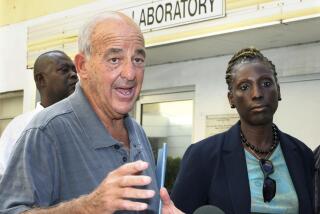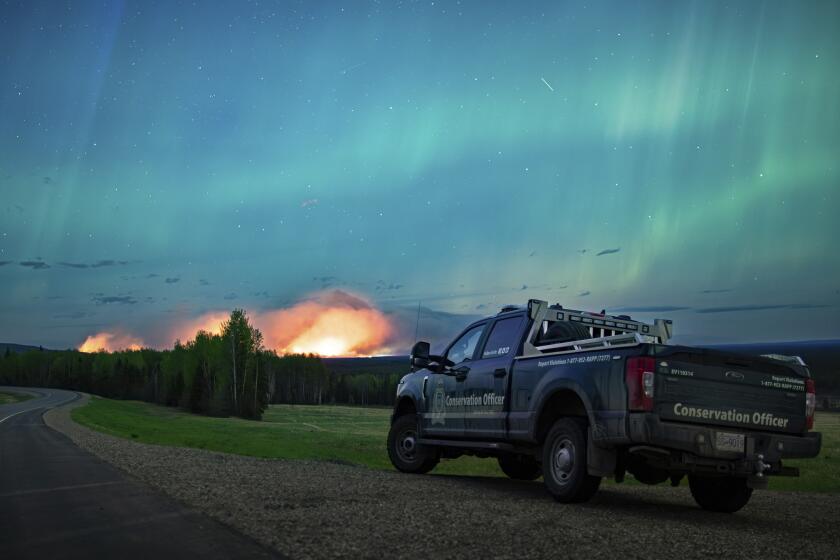High-Rises Shed Glass; Marble Slabs May Be Next : Chicago Pedestrians Wary of Falling Sky
While chances are remote that Chicken Littles in the Windy City will get hit by falling pieces of sky, pedestrians here have reason to be wary about falling pieces of skyscraper.
Two hundred windows in the world’s tallest building, the landmark 110-story Sears Tower, have shattered in windstorms so far this year, showering the streets below. A few blocks away stainless steel straps are being put in place on the world’s fourth-tallest tower, the 80-story Amoco Building, where 300-pound marble slabs have begun to “bow.”
Making Sure It Won’t Happen
“None has fallen in the 15 years the building has been up, and we want to make sure they don’t,” said Michael Thompson, Amoco’s media relations director.
Engineers and architects are searching for the source of problems at both skyscrapers, but Chicago’s occasionally ferocious weather is a contributing factor.
Not Just Wind?
Sears lost 100 windows in February and another 100 last week, during fierce wind storms but company spokeswoman Kathy Gocfa said that “windows do not break just because of strong winds.”
The theory at Sears is that the windows, designed to withstand 150-m.p.h. winds, were shattered when gusts of up to 75 m.p.h. picked up debris from high-rise construction sites on either side of the tower and slammed the debris into them. When panes on the 80th floor broke, the winds then drove pieces of the falling glass into windows on lower floors, creating “a cascade effect,” Gocfa said. Windows between the 80th and 20th floors were shattered.
As chunks of glass crashed onto sidewalks and traffic lanes, Chicago police took quick action to seal off several blocks around the tower, preventing injuries.
The Sears Tower, in the southwest corner of the downtown business district, has 16,000 windows and until this year only lost between six and eight a year.
“In 15 years we have had no major wind damage,” said Gocfa, “so obviously this is very unusual.”
Advisers Notice Problem
At the Amoco Building, which is situated between Lake Michigan and Michigan Avenue east of the downtown Loop district, the bowing of the the 300-pound, four-foot-square marble slabs is worst on the southeast corner. There “we get a combination of the heaviest wind load and the most rapid thermal cycling during the day,” Thompson said. “We’re not prepared to say that there is a direct cause and effect, but our technical advisers have noticed that set of circumstances.”
The problem could be particularly costly for Amoco, which may have to replace some or all of the 43,000 marble slabs covering the 1,136-foot-tall tower.
Amoco officials will not put a price tag on correcting the problem or putting a new metal or stone sheath on the skyscraper, but they say that published reports estimating the cost at $20 million are low.
Other Hazards
The two buildings offer only the most extreme examples of potential hazards to pedestrians as new buildings crowd Chicago’s skyline. Last week one pedestrian suffered a cut foot when a window in a financial-district high-rise office building crashed to the street.
In recent winters barricades warning “danger falling ice” have become familiar sights along downtown sidewalks. At other buildings, whose mere presence have created strong wind currents, ropes are sometimes strung along walkways, like railings on staircases, to offer pedestrians a hand hold--giving new meaning to “being on the ropes.”
More to Read
Start your day right
Sign up for Essential California for news, features and recommendations from the L.A. Times and beyond in your inbox six days a week.
You may occasionally receive promotional content from the Los Angeles Times.






